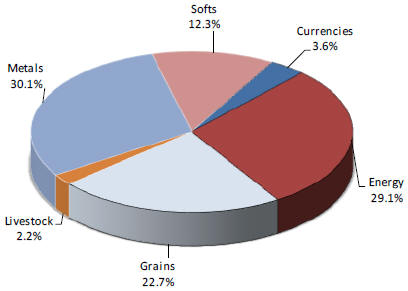As of December 31, 2022,2023, all trading decisions are made for the Partnership by Millburn Ridgefield Corporation (“Millburn”), Ospraie Management, LLC (“Ospraie”), Northlander Commodity Advisors LLP (“Northlander”), Drakewood Capital Management Limited (“Drakewood”) and, EMC Capital Advisors, LLC (“EMC”) and Opus Futures, LLC (“Opus”) (each an “Advisor” and, collectively, the “Advisors”), each, a registered commodity trading advisor. Effective on November 30, 2018, Aventis Asset Management, LLC (“Aventis”) ceased to act as a commodity trading advisor for the Partnership. Effective on March 31, 2019, Harbour Square Capital Management LLC (“Harbour Square”) ceased to act as a commodity trading advisor to the Partnership. Effective on December 31, 2020, Aquantum GmbH (“Aquantum”) ceased to act as a commodity trading advisor to the Partnership. Effective June 30, 2022, Geosol Capital, LLC (“Geosol”) ceased to act as a commodity trading advisor to the Partnership. Effective October 31, 2022, Pan Capital Management L.P. (“Pan”) ceased to act as a commodity trading advisor to the Partnership. References herein to the “Advisors” may also include, as relevant, Pan Geosol, Aquantum, Harbour Square and Aventis. From February 1, 2013 until December 31, 2017, all trading decisions were made by Aventis.Geosol. A description of the trading activities and focus of each Advisor is included under “Item 7. Management’s Discussion and Analysis of Financial Condition and Results of Operations.” Each Advisor is allocated a portion of the Partnership’s assets to manage. The Partnership invests the portion of its assets allocated to each of the Advisors either directly, through individually managed accounts, or indirectly through its investment in the Funds. The Advisors are not affiliated with one another, are not affiliated with the General Partner and MS&Co., and are not responsible for the organization or operation of the Partnership.
As of June 13, 2018, the Partnership began offering three classes of limited partnership interests, Class A Redeemable Units, Class D Redeemable Units and Class Z Redeemable Units. All Redeemable Units issued prior to October 31, 2016 were deemed “Class A Redeemable Units.” Class Z Redeemable Units were first issued on January 1, 2017. The rights, liabilities, risks and fees associated with investment in the Class A Redeemable Units were not changed. Class D Redeemable Units were first issued July 1, 2018. The rights, liabilities, risks, and fees associated with investment in the Class A Redeemable Units and Class Z Redeemable Units were not changed. Class A Redeemable Units, Class D Redeemable Units and Class Z Redeemable Units will each be referred to as a “Class” and collectively referred to as the “Classes.” Class A Redeemable Units are and Class D Redeemable Units were available to taxable U.S. individuals and institutions, U.S. tax exempt individuals and institutions and non-U.S. investors. Class Z Redeemable Units are offered to limited partners who receive advisory services from Morgan Stanley Smith Barney LLC (doing business as Morgan Stanley Wealth Management) (“Morgan Stanley Wealth Management”) and may also be offered to certain employees of Morgan Stanley and/or its subsidiaries (and their family members). Class A Redeemable Units, Class D Redeemable Units and Class Z Redeemable Units are identical, except that Class A Redeemable Units and Class D Redeemable Units are subject to a monthly ongoing selling agent fee equal to 1/12 of 0.75% (a 0.75% annual rate) of the adjusted net assets of Class A Redeemable Units and Class D Redeemable Units, respectively, as of the end of each month, whereas Class Z Redeemable Units are not subject to a monthly ongoing selling agent fee. For the period from July 1, 2020 to December 31, 2020, Class A Redeemable Units were subject to a monthly ongoing selling agent fee equal to 1/12 of 1.00% (a 1.00% annual rate) of the adjusted net assets of Class A Redeemable Units as of the end of each month. Prior to July 1, 2020, Class A Redeemable Units were subject to a monthly ongoing selling agent fee equal to 1/12 of 2.00% (a 2.00% annual rate) of the adjusted net assets of Class A Redeemable Units as of the end of each month. Effective January 1, 2021, the Partnership ceased offering Class D Redeemable Units.
For the period January 1, 20222023 through December 31, 2022,2023, the approximate average market sector distribution for the Partnership was as follows:


42









